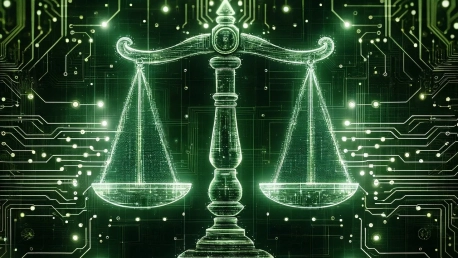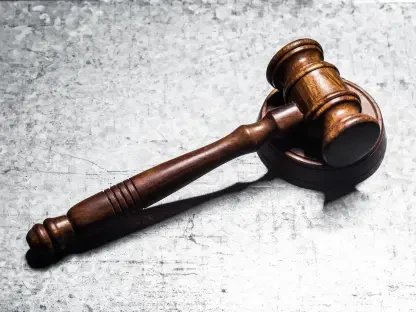Data privacy has emerged as a cornerstone of digital rights, and as such, digital forensic investigations must navigate the complex intersection of technological capability and legal constraints. This article explores the intricate balance required between the tenets of data privacy and the imperatives of digital forensics within the realm of cyber law. We delve into the constitutional and regulatory considerations, elucidate the challenges posed by new legislative acts, and advocate for the development of a harmonious approach that safeguards individual liberties while enabling effective and ethical investigations.
The Elevation of Data Privacy to a Fundamental Right
Landmark Rulings and Constitutional Considerations
The Supreme Court case of Justice K.S. Puttaswamy & Anr. vs. Union of India & Ors. serves as a cornerstone, enshrining privacy as a fundamental right, irreversibly altering the landscape of digital forensic investigations. In light of this verdict, cybersecurity professionals grapple with the task of balancing the meticulous demands of forensic science with inviolable privacy rights. Ethical methodologies must, therefore, evolve in tandem with constitutional decrees to prevent the lawful pursuit of justice from unintentionally encroaching on individual liberty.While the law often moves sluggishly, technology races ahead unbridled. Forensic experts now operate in a legal limbo, anticipating established procedures that can reconcile the newly anointed privacy protections with the relentless onslaught of digital crimes. The focus has unequivocally shifted towards outlining approaches that respect personal boundaries without compromising the investigation’s integrity.
The Intersection of Privacy Rights and Cyber Investigations
The dance between privacy rights and the needs of cyber investigations is particularly nuanced. Privacy is not absolute; it must occasionally yield to pressing matters of justice. Yet, the question remains: How can digital forensics be executed to the highest standard while upholding this sacrosanct right? A rigid adherence to procedure becomes paramount, with robust oversight mechanisms in place to prevent overreach. Investigators must exercise restraint and precision, ensuring every digital trace analyzed or stored is done so under the legal authority, with a clear, justified purpose underlying each forensic action.In practice, this balance mandates that forensic protocols be crafted with privacy protection ingrained from the outset. Every keystroke logged, every byte examined, every conclusion drawn must account for the overarching preservation of individual rights, showcasing that privacy considerations are not post hoc reminders but foundational elements in the digital investigation framework.
The Digital Personal Data Protection Act and Forensic Challenges
Navigating the DPDP Act in Digital Forensics
The emergence of the Digital Personal Data Protection Act, 2023 heralds a new era for digital privacy in India, yet presents forensic practitioners with fresh challenges. While beneficial in its intent, as of yet, it lacks the concrete regulations that would guide forensic professionals in the daily execution of their duties. Pragmatic and circumspect strategies must be devised by the legal community to interpret and comply with the spirit of the DPDP Act while ensuring that the digital investigation’s efficacy is not hindered by the absence of explicit procedural guidelines.Crucial to this process is understanding the Act’s nuances, such as provisions for legal authorization, data minimization efforts, and securing forensic processes to safeguard data integrity. As the industry comes to grips with these emerging requirements, practitioners must remain agile, updating investigative techniques and protocols to be in lockstep with the transformative paradigm the DPDP Act represents.
Comparing the GDPR and DPDP Act Implications
The General Data Protection Regulation (GDPR) of the EU has been a harbinger for data privacy laws across the globe, and the DPDP Act draws parallels in philosophy and function. Comparatively analyzing the two can provide forensic experts with a framework to anticipate the application and impact of India’s new legislation. Although the DPDP Act is still matriculating into its final form, looking at the GDPR can be instructive in understanding the trajectory and possible implications when it comes to forensic activities. Critical to both pieces of legislation is the stringent criteria under which data can be collected, examined, and retained, all intertwined with the requirement for clear legal authorization. The GDPR has already had significant implications for forensics in Europe, highlighting the delicate nature of balancing data protection with investigatory mandates. The DPDP Act is anticipated to enact similar constraints and safeguards, signaling a global shift towards placing individual privacy at the forefront of cyber law enforcement.
Adhering to Legal and Ethical Forensic Practices
Legal Compliance and Expert Involvement
To navigate the legal landscape of digital forensics, compliance with stalwarts of Indian legal jurisprudence, such as the Indian Evidence Act of 1872, is non-negotiable. The implications of Sections 45 and 46, dealing with the role of expert witnesses and their testimonies, emphasize the importance of involving forensic professionals who not only command a mastery of technology but possess an intimate understanding of the legal boundaries within which they operate. The admissibility and reliability of forensic evidence hinge upon the expertise of these professionals. Their analyses form the bedrock upon which cases are built or dismantled. Scrutiny of their qualifications, methods, and ethical standards is paramount, ensuring the justice system’s integrity remains uncompromised in our digital age.
Protecting Integrity through Best Practices
Best practices are the bulwarks safeguarding data integrity during the digital forensic process. Foremost among these is the transparent maintenance of a chain of custody. As evidence travels from discovery to courtroom, recording every transition, every process, every individual who interacts with the data is critical. This unbroken record provides trust in the evidence presented and bolsters the pursuit of truthful outcomes in court.Moreover, securing the forensic workflow against potential contamination and mitigating biases ensure that privacy is not an incidental consideration but a prominent factor. These practices stipulate clear protocols, comprehensive training for forensic personnel, and facilities properly outfitted to handle sensitive digital data in accordance with legal obligations.
Principles to Uphold Data Privacy in Digital Forensics
Non-Alteration of Digital Evidence
Central to the credibility of forensic investigations is the principle of non-alteration. The digital artifacts under scrutiny must remain pristine, uncompromised by the very hands tasked with uncovering their secrets. The integrity of the data is sacrosanct, enshrined in the methodology of forensics itself. Alteration, intentional or accidental, is anathema to justice, for it has the potential to mislead and misrepresent.To counteract such risks, forensic specialists employ an array of tools and techniques designed to clone or image devices, allowing investigations to proceed on exact replicas while the originals remain untouched. This precise replication stands as a testament to the technical proficiency and diligent adherence to standards expected of professionals in the field.
Legal and Technical Competence in Investigations
In the digital era, data privacy stands as a key aspect of our rights online, demanding that digital forensic probes traverse a challenging terrain, marked by a blend of advanced technological capabilities and legal boundaries. The essence of this piece is to dissect the delicate equilibrium that investigators must maintain between upholding data privacy principles and pursuing the needs of digital forensics, all within the purview of cyber law.This discussion not only outlines the crucial constitutional and regulatory frameworks that guide such activities but also shines a light on the hurdles introduced by recent legal enactments. It underscores the pressing need for cultivating a balanced methodology that not only respects individual privacy rights but also empowers investigators to conduct their work efficiently and morally.The objective is clear: formulating an approach that respects the private digital domains of individuals while not impeding proficient forensic analysis. The article argues for a symbiotic relationship between personal digital sovereignty and the essentials of forensic science—a coalition that is thoughtful, precise, and considerate of the evolving nature of both cyber law and technology.









